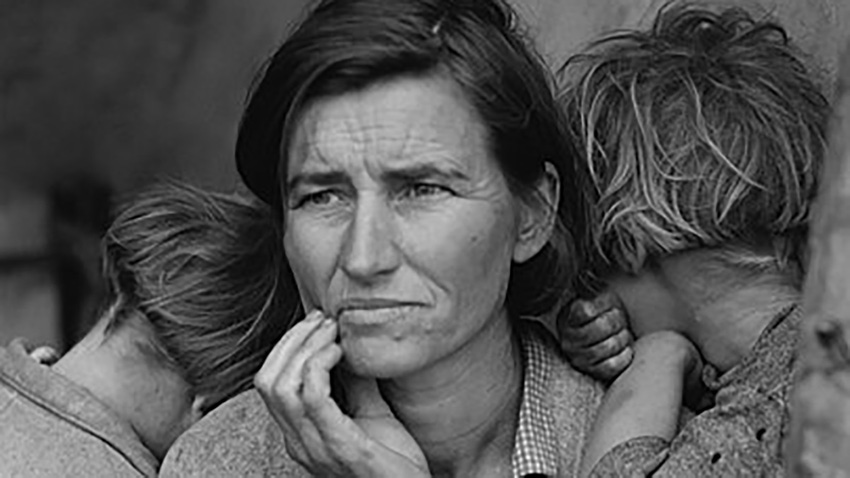
If you have read anything about the Great Depression, there is a good chance that you have seen a Dorothea Lange photograph. The photo of a 32-year-old migrant woman with three of her seven children, including an infant, is probably the most iconic photograph of the era. The photo is called Migrant Mother.
I’ve always been drawn to that photo, as have others, because of the emotion it evokes. Florence Owens Thompson, the woman in the picture, is worn down. As she stares into the distance, she bears the weight of the world and the fate of her family on her shoulders.
She is attractive, but weathered and it is hard to look away from her as she sits in the shade of a lean-to tent with her tiny, dirty children. Whose heart wouldn’t be torn by her plight?
The photographer, Dorothea Lange, was paid by the U.S. Government to document the lives of migrant farm workers. She left her family, married Berkley economist Paul Schuster Taylor, and traveled for five years across the Midwest and Southwest, recording rural poverty among migrant workers and sharecroppers.
I first encountered her photographs in high school. I was interested in black and white photography and found her graphic style fascinating and impactful.
I studied her in college and have presented programs on her works to several groups, partly because she took pictures where my family lived and worked during the Depression. My grandfathers farmed during the Depression and told me stories of the labor camps, migrant workers and the desperate people moving through their areas.
Lange moved among those struggling to feed their families and weather the conditions of the West in tents and lean-tos. She used a large format box camera – these were not snapshots with a smart phone. The photos required physical development in caustic chemicals and harsh conditions.
Her photos show the struggle and suffering of people who look like us - people with families like ours. They are timeless, while they tell the story of a place in time.
Thompson raised her family and eventually settled in Modesto, Calif. She is quoted as saying she wished the photo had never been taken. It became famous. It didn’t make the family’s life easier.
In a 2008 CNN interview, one of her daughters called her the backbone of the family who made sure that her children never lacked for something to eat. Thompson had died in 1983. In 1998 the photo became a postage stamp.
Langes photos are worth a viewing. When I see the photos that present locations where I have been – Eloy, Ariz., or Bakersfield, Calif., - in contexts I know nothing of, it shakes my sensibilities.
It also impresses upon me how close we can get to a time when basic necessities were a rarity and have such little concern that it could happen again.
About the Author(s)
You May Also Like






